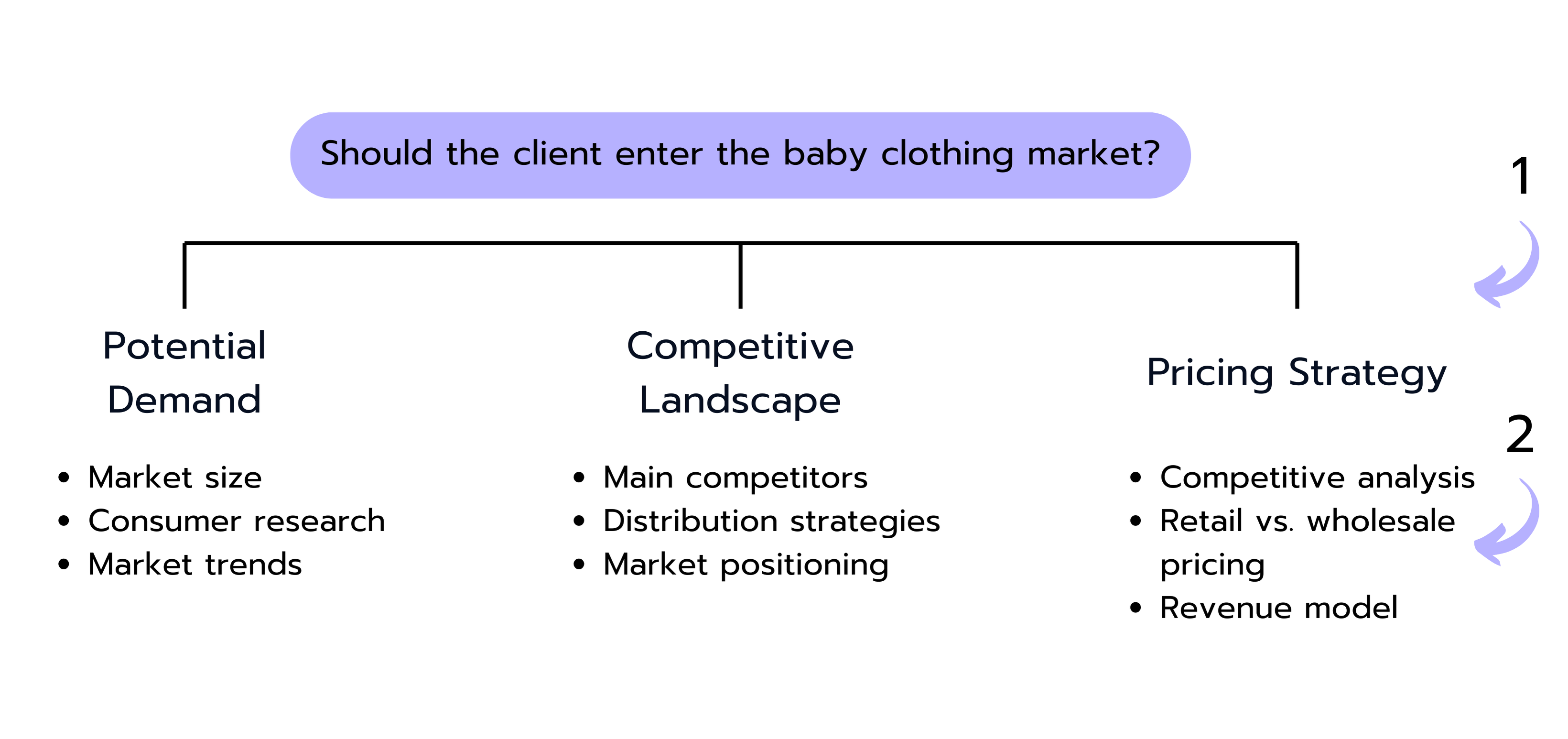To be convincing in case interviews, it is important not only to have a well-thought-out structure, but also to communicate it clearly and effectively. Here is a guide on how to achieve this using a top-down approach. We will provide helpful tips and approaches using the following case study example! 🚀
Case Prompt:
"Our client is a consumer goods company looking for growth opportunities. They are considering extending their existing baby products brand to a new product category - baby clothing. They expect this business to generate over 300 million USD in annual revenue from the first year. Should our client enter the baby clothing market?"
👉 By the way, you can solve the entire case here:



